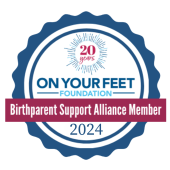Easy-to-Follow Checklist for Prospective Adoptive Parents

Adoption brings big changes, but the first steps often feel small – filling out forms, asking questions, and figuring out what happens next. That’s where a checklist for prospective adoptive parents makes a real difference. It breaks things down into clear, manageable steps so hopeful parents don’t feel overwhelmed.
At the Adoption Center for Family Building, we understand that the process of preparing to adopt can raise a lot of unknowns. From legal steps to emotional readiness, each part of the process matters. This easy-to-follow guide was created to give families a helpful place to begin or to stay on track throughout the process.
What Should Be Included in a Checklist for Prospective Adoptive Parents?
A checklist for prospective adoptive parents should include legal paperwork, financial planning, emotional preparation, home study requirements, and post-placement expectations. Let’s take a look at what that means.
Before anything else, it’s important to understand the requirements for adopting a child in your state and through your chosen agency. These may vary slightly but often include:
- Proof of age (often 21 or older)
- Legal U.S. residency or citizenship
- A stable income and home environment
- Background checks and clearances
- Health evaluations
Start by gathering personal documents like birth certificates, marriage licenses (if applicable), recent tax returns, and employment verification. These are usually requested during the home study.
Financial Preparation
Adoption does come with costs, some predictable, some unexpected. Part of the checklist for prospective adoptive parents includes making a realistic financial plan. Consider:
- Agency or attorney fees
- Home study and post-placement visit fees
- Travel and lodging (for domestic or international adoption)
- Birth parent expenses (if applicable)
Budgeting early can reduce stress later. Families often find peace of mind in organizing savings, fundraising ideas, or applying for grants or loans. Knowing how you’ll handle the financial side is key to preparing to adopt with confidence.
Emotional Readiness and Support
Adoption is not just about paperwork, it’s also about building relationships and navigating emotionally complex situations. On your checklist, ask:
- Are we open to different types of adoption (infant, older child, sibling group)?
- Do we have support from extended family or a community group?
- Are we ready to talk about adoption with our child at every stage of life?
- Are we prepared for an open relationship with the birth family?
These questions help families reflect on their values and expectations. Counseling or support groups can also be beneficial and are sometimes required by agencies. Emotional support is just as important as legal readiness when it comes to the long-term success of the adoption.
Preparing for the Home Study
The home study is often one of the most anticipated (and sometimes misunderstood) parts of the process. It’s required in order to show that adoptive parents are ready to welcome a child into their home. While this can feel intimidating, agencies are not looking for you to be perfect. The goal is to ensure you are safe, stable, and ready. Here’s what’s typically included:
- Multiple interviews (in-person or virtual)
- Medical reports
- Financial statements
- Personal references
- Safety inspection of your home
- Parenting and adoption education classes
Include reminders in your checklist to complete childproofing, test smoke alarms, and prepare a room or space for the child. Agencies are not looking for magazine-perfect homes, they want to know a child will be safe and cared for.
Once those initial steps are underway, prospective parents can begin to focus on the long-term vision: how they’ll continue preparing emotionally, build connections with birth families (if applicable), and support their child’s identity through adoption. We’ll cover all of that in the next part.
How Do Prospective Adoptive Parents Prepare for the Process?
Prospective adoptive parents prepare for the process by completing legal steps, securing emotional and financial readiness, preparing their home, and learning about unique aspects of adoption.
Let’s expand on those pieces to give you a more practical, people-centered approach.
Parenting Education and Adoption Training
Most licensed agencies and professionals will require families to complete some type of adoption education. This part of the checklist for prospective adoptive parents is crucial because it builds a realistic understanding of what adoption means for both the child and the adoptive family.
You’ll likely cover topics such as:
- Bonding and attachment
- Transracial or transcultural adoption
- Trauma and grief in adoption
- Openness in adoption (ongoing contact with birth parents)
Even if your state doesn’t require formal classes, making adoption education part of your adoption preparation is a smart move. It helps parents meet the emotional needs of adopted children with empathy, patience, and understanding.
Understanding Open Adoption and Birth Parent Relationships
Every adoption is unique, and open adoption looks different for every family. Some birth parents may want updates or visits; others may prefer letters and photos. Many adoptive families find that openness brings comfort, honesty, and security over time.
Include the following questions in your checklist:
- Are we comfortable with an open adoption?
- What level of contact can we support long term?
- How can we speak respectfully about the birth parents and honor our child’s connection with their birth family?
Talking through these topics now gives your family space to set healthy boundaries and understand what openness can mean in practice. It also shows birth parents that you respect their role in the child’s life.
Building Your Adoption Profile
Creating a family profile is often one of the most personal steps in the checklist for prospective adoptive parents. Your agency or attorney may ask you to submit a photo book or written introduction that birth parents can view when choosing a family. This is your opportunity to be honest and open about who you are and what you value.
Tips for a strong adoption profile:
- Use real, recent photos showing daily life
- Highlight your home, pets, hobbies, and neighborhood
- Be warm and genuine in your language
- Focus on the life you hope to share with a child
It’s okay to be nervous about how you come across, but keep in mind that birth parents are often looking for connection and sincerity. A thoughtful profile can be a powerful piece of your preparation.
Working with Your Adoption Professional
Whether you’re using an agency, attorney, or facilitator, it’s important to keep open communication throughout the process. Include regular check-ins and updates in your checklist for prospective adoptive parents to make sure your application stays active and your documents don’t expire.
Here are a few ways to stay organized:
- Keep a calendar of deadlines (fingerprints, physicals, renewals)
- Make digital copies of all documents
- Ask questions when you’re unsure, don’t wait!
Your adoption professional is there to help, but being proactive and organized shows your dedication and helps avoid unnecessary delays.
Supporting Each Other as a Family
The adoption process can bring out both excitement and anxiety. It’s natural for hopeful parents to feel a mix of emotions. Creating space for honest conversations, between partners, with children already in the home, or with extended family, can make a meaningful difference.
As part of preparing to adopt, consider:
- Scheduling regular check-ins with your partner
- Talking openly with other children in your family about adoption
- Practicing ways to talk about adoption in everyday life
This step isn’t just about logistics, it’s about growing in unity as a family. As you prepare to welcome a new member, supporting each other helps create the strong foundation every child deserves.
Getting Matched with a Child
The matching process can vary depending on the type of adoption (domestic infant, foster care, or international). For many families, this step involves waiting to be selected by a birth parent or matched through an agency.
Here are some common things to track during this phase:
- Stay in contact with your adoption professional
- Keep your profile updated with new photos or information
- Be prepared for sudden contact if a birth mother chooses you
- Talk regularly as a family about your hopes and concerns
It’s important to maintain a healthy mindset during the wait. Some matches happen quickly, while others take time. Remaining flexible and open, while continually preparing, can help keep emotions balanced.
Planning for Placement
Once you’ve been matched, it’s time to prepare for the actual placement. This is a very emotional step for both adoptive parents and birth parents. Being organized and sensitive to everyone involved is key.
Include these action items in your checklist:
- Pack a hospital or travel bag (for domestic adoptions)
- Prepare a welcome space for the child (not just a nursery)
- Speak with the birth parent (if possible and appropriate)
- Clarify hospital and placement plans with your agency
In some domestic infant adoptions, adoptive parents may be present at the hospital. In others, placement happens days or weeks after birth. International and foster placements follow different timelines. No matter the type, staying ready helps ease the transition for everyone involved.
Finalizing the Adoption and Moving Forward
Finalization is the legal conclusion of the adoption process, but for adoptive families, it often feels like the real beginning. A judge legally recognizes the adoption, making the child a permanent member of the family. While it’s often an emotional day, it’s also filled with relief, gratitude, and hope.
Finalization usually takes place several months after placement, once all post-placement visits are complete and your adoption professional submits the required reports to the court.
Expect the following to be part of this process:
- A scheduled court hearing date
- Appearance before a family court judge
- Receipt of the final adoption decree
Some courts allow extended family to attend, and many families choose to celebrate this moment. It’s not only a legal milestone, it’s a deeply personal one. Keep in mind that finalization requirements vary by state and adoption type, so stay in close communication with your adoption professional throughout this final step.
A Checklist for Prospective Adoptive Parents That Helps
A clear and practical checklist for prospective adoptive parents turns uncertainty into confidence. From legal steps and emotional readiness to home prep and lifelong support, every part of the process matters. With the right tools and people around you, adoption becomes something you move through with clarity and purpose, not pressure.
We hope this guide helps you stay organized and encouraged as you move forward in building your family through adoption.
Ready to Take the Next Step? Connect With the Adoption Center for Family Building
If you’re preparing for adoption or thinking about starting soon, we’re here to walk with you. Our team at Adoption Center for Family Building offers personalized support, expert guidance, and a caring environment for every step of the process.
Want to talk to someone directly? Reach out to us through our contact page and we’ll be happy to answer your questions, discuss your options, or help you get started.





